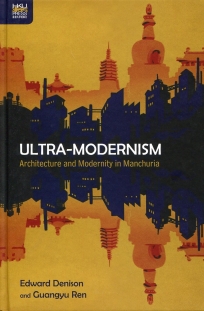Ultra-Modernism:Architecture and Modernity in Manchuria
出版社:香港大學出版社
出版日期:2017-02-24
ISBN:9789888390502
定價:1332 元
The first half of the twentieth century was fraught with global tensions and political machinations. However, for all the destruction in that period, these geopolitical conditions in Manchuria cultivated an extraordinary variety of architecture and urban planning, which has completely escaped international attention until now. With over forty carefully chosen images, Ultra-Modernism: Architecture and Modernity in Manchuria is the first book in English that illustrates Manchuria’s encounter with modernity through its built environment. Edward Denison and Guangyu Ren take readers through Russia’s early territorial claims, Japan’s construction of the South Manchuria Railway (SMR), and the establishment of Manchukuo in 1932. The book examines in detail the creation of modern cities along the SMR and focuses on three of the most important modern urban centres in Manchuria: the Russian-dominated city of Harbin, the port of Dalian, and the new capital of Manchukuo, Hsinking (Changchun).
Like so much of the world outside ‘the West’ during the twentieth century, Manchuria’s encounter with modernity is merely a faint whisper drowned out by the deafening master narrative of Western-centric modernism. This book attempts to redress an imbalance in the modern history of China by studying the impact of Japan on architecture and planning beyond the depredations of the Sino-Japanese War.
Edward Denison is an architectural historian and photographer based in London, where he is lecturer in architectural history and theory at the Bartlett School of Architecture, UCL.
Like so much of the world outside ‘the West’ during the twentieth century, Manchuria’s encounter with modernity is merely a faint whisper drowned out by the deafening master narrative of Western-centric modernism. This book attempts to redress an imbalance in the modern history of China by studying the impact of Japan on architecture and planning beyond the depredations of the Sino-Japanese War.
Edward Denison is an architectural historian and photographer based in London, where he is lecturer in architectural history and theory at the Bartlett School of Architecture, UCL.



















